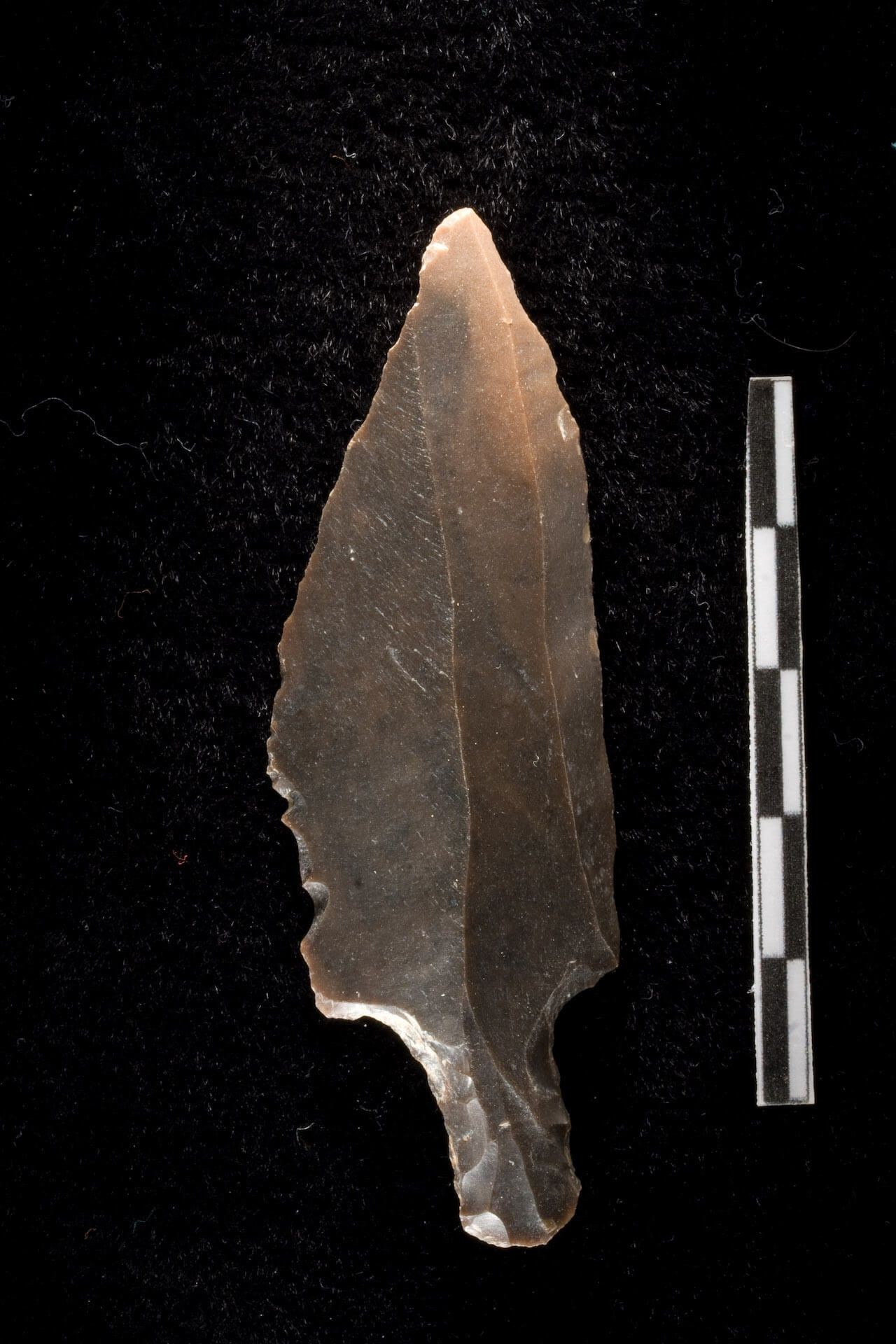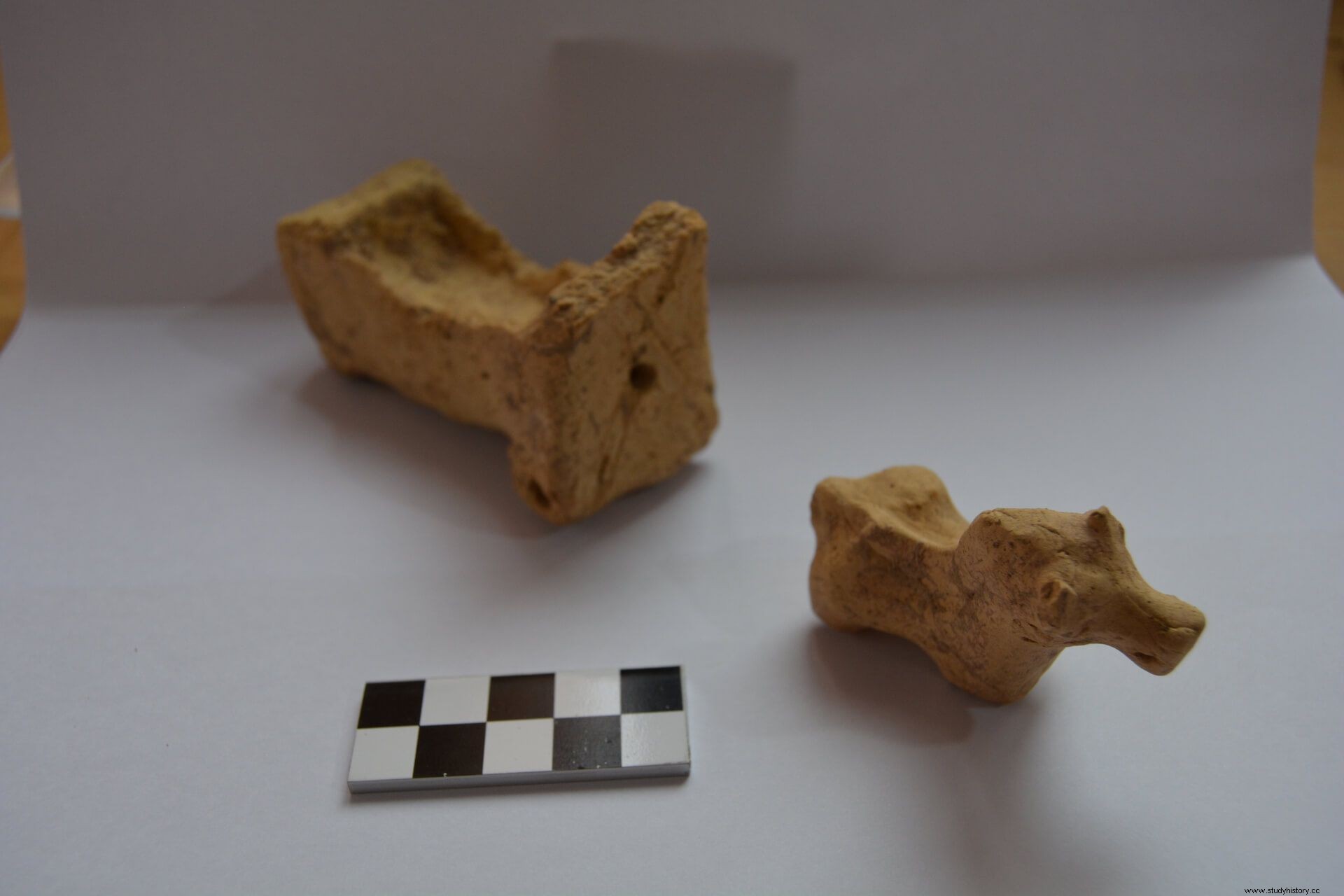
But this research team has been , on a regular basis, carries out archaeological excavations oriented to this line of research. First it was in Syria, then in Turkey, always with a similar objective:to contribute through archaeological analysis to establish the origin of agriculture and its impact on archaic human societies[1]. The choice of the Near East is not accidental, as is known, it is in this part of the world where the cultivation of cereals and legumes and animal domestication took place for the first time. That is to say, the oldest and thanks to an autochthonous process of transformation. But at the same time, it constitutes an ideal region to analyze the global nature of the phenomenon, since this transformation of an economic nature is accompanied by or generates a wide range of social and cultural transformations, affecting all areas of society (sedentary lifestyle, demographic growth, technology, of life, symbology,…). In short, the set of transformations that constitute a "revolution" or a historical event considered the most decisive for humanity from its appearance until the industrial revolution.
The study area of the project is located in the area known as Upper Mesopotamia and encompasses the current countries of Syria, Turkey and Iraq. The objectives of the work carried out are focused on the study of the neolithization processes associated with agricultural and livestock domestication, sedentary lifestyle and structuring of the towns until the formation of the first urban structures. This scope of analysis includes chronologies ranging from 12,000 cal BC [acronym for calibrated before Christ , calibrated radiocarbon dates] to 3000 cal BC, and which includes the cultural groups of the last hunter-gatherers (Natufian), the first farmers and ranchers (preceramic Neolithic A and B, the ceramic Neolithic, and the approximation to the consolidated of the Hassuna, Samarra, Halaf and Obeid groups, to Uruk and early Bronze Age (Ninevite 5 ).
Also highlight the specificity of the methodology used, that is, the combination of two interrelated work dynamics. On the one hand, the research activity in the actual excavation and analysis of the Near East sites, with the development of excavation projects that take place with a certain continuity and always trying to answer the hypotheses and questions generated. On the other hand, an interdisciplinary methodology that combines the disciplines that study both biotic and abiotic materials. Finally, collaboration with international teams, both European and with teams from universities in the Near East, an aspect that facilitates the essential complementarity between basic research and training.
From the arid steppes of Palmyra to the Zagros mountains
The current research project constitutes the continuation of research work with a tradition of more than 30 years of excavation projects and archaeological study of Neolithic sites in the Near East, when in 1987 began the study and excavation of Umm el Tlel, near the town of Palmira (Syria). At that time, the knowledge of the neolithization process in the arid zones was a total unknown and our contribution as those responsible for the analysis of the Kowm site, a small site located in an oasis between Palmyra and Raqqa, allowed us to know the characteristics of the last groups of hunter-gatherers, the population gap during the innovative period in the stage of incipient agriculture and the reoccupation of the oasis in the 6th millennium. This site showed an interesting socioeconomic duality of groups of farmers in stable villages, such as the one shown by the Umm el Tlel site and others in semi-nomadic camps with an economic activity centered on pastoralism.
The construction of the Tchrine reservoirs, in the middle valley of the Euphrates river in Syria, near the city of Membij, allowed the start in the early 90s of the 20th century the excavation and study of several archaeological settlements, among which Tell Halula stands out. The stable excavations for more than 20 years allowed to establish the historical-archaeological evolution of a town inhabited between 7800-5300 before our era. Two long millennia of history of a town of the first farmers, with an incipient sedentary lifestyle and an important development of architectural techniques, associated with complex houses with several rooms, which facilitate the separation of productive and residential activities. But it was also possible to study the consolidation of agriculture with the cultivation of cereals and legumes, the origin and archaic development of livestock practices with the process of domestication of the species that even today constitute the main source of protein (suids, bovids and ovicaprines) from all over the Mediterranean. All this within the framework of technological, cultural and social transformations in which the signs of the incipient social differentiation between the different socioeconomic units are observed. It is through the conserved material elements (house, graves, furniture, etc.) that family units can be identified, with the confirmation of their formation for the first time in history, coming from previous tribal structures.

It was also very interesting to document the technological transformations associated with these communities, among which the appearance of ceramics and storage capacity stand out. These transformations were documented in addition to tell Halula, in the excavation and study of Akarçay Tepe near the city of Sanliurfa (Turkey), a project carried out in collaboration with archaeologists from the University of Istanbul.
The consolidation of the research allowed to geographically expand the study area looking for the process of consolidation of agricultural societies and the birth of classical Mesopotamian cultures, that is, the civilizations called Halaf, Samarra , Obeid mainly. This has been the objective of the excavations carried out for fifteen years, in collaboration with archaeologists from the University of Liège (Belgium), in two settlements located in two distinct ecological and cultural zones in northern Mesopotamia:Chagar Bazar (Hassake) in the eastern zone Syria and Tell Amarna (Euphrates Valley, Aleppo). The scientific contributions have been very important both at the level of socioeconomic and technological characterization of the two specific communities excavated and studied and, above all, due to the historical inferences that have been forged. The redefinition of the area of formation of the Halaf culture, now more extensive and western, as well as the very nature of its formation. On the other hand, the later stage of the Halaf culture and its relationship process with the next cultural groups, especially the Obeid world.
Kurdistan a new opportunity for the investigation of the first agricultural societies in an unknown area
The conflict in Syria and the difficulties that this human, economic and political drama are generating in the country and in nearby areas, directed the team's investigation towards northern Iraq, in the historical region of Kurdistan. An area that, since 2011 and thanks to the political and military stabilization of the area, has been opened up to international research and currently offers an ideal framework for study and cooperation. The fact that research in prehistoric archeology had been paralyzed since the 1960s in this area facilitated the desire for collaboration and the possibilities of research work with local universities and the General Directorate of Antiquities. On the other hand, at a scientific level, the need to update the archaeological data is considered essential and essential.

Two excavation and survey projects are currently underway in this area. On the one hand, the analysis of the Gird Laskhir settlement in the area of the plain of the current city of Erbil, which constitutes one of the most complete historical sequences in the region since it covers from the IV millennium (Uruk period) to the first millennium. The occupations of the III millennium, with an extensive installation linked to the interesting period of the Ninevite 5 , has brought the most significant novelties. On the other hand, in the north of Kurdistan, in the mountainous area of Zagros, in the Soran region, an excavation and study of the Banahilk site is being carried out, which links to the problems studied in the Euphrates valley and in Djezireh. The knowledge of the period of splendor of the Neolithic Halaf culture in the VI millennium, but now from the study of the easternmost town of this culture. The analysis of the regional varieties of the material elements that characterize this period, as well as the social mechanisms of exchange networks and social relations, will help explain the great geographical and temporal extension of the great cultural units, exemplified in this case by the Halaf culture. .
In short, a long and fruitful archaeological and heritage investigation that is currently alive and dynamic, continuing a long tradition of archaeological studies. A line of research that is oriented to the desire to contribute to the knowledge of the origin and consolidation of agricultural and livestock societies. The choice of the geographical framework of the Near East is also very important, since we must remember that it is one of the enclaves in the world where the socioeconomic, cultural and social transformation that the passage from hunter-gatherer to agricultural and livestock communities means occurs with greater antiquity, and that is at the origin of the later transformation documented in the European continent.

Finally, point out that this research and especially its dissemination and collaboration in the training of researchers, aims to revert to the current society of the Near East, with the hope of contributing to its development, wealth and stability.
[1] The SAPPO research team is currently made up of:R. Alcantara, J. Anfruns, R. Arnaiz, A. Breu, J. Bosch, M. Bofill, A. Ortiz, S. Calvo, W. Cruells, C. Douché F. Estebaranz, H. Faisal, J.M. Faura, I. Gironès, J. González, P. Mylona, A. Monforte, S. Ortiz, S. Pardo, I. Peix, J. A. Sánchez Priego, M. Saña, Q. Sisa, B. Taha, S. Taranto, E. Villarroya, J. Wattez,
It is also essential to remember the researchers who have historically contributed to the projects:G. Alcalde, F. Borrell, M. Bouso, X. Clop, A. Ferrer, M. Gangonells , E. Guerrero, J.J. Ibañez, T. Majo, T. Palomo, G. Ribé, C. Tornero, O. Vicente. Our thanks also to the General Directorates of Antiquities and Museums of Syria, Turkey and Kurdistan (Iraq). These projects have benefited from an economic collaboration of the competitive projects of the Ministries of Culture and of Education and Science (Government of Spain). Currently the aid comes from the IPCE (Ministry of Education, Culture and Sports) and the Ministry of Economy and Competitiveness/Feder (HAR 2016-78416 -P) and the Palarq Foundation (Madrid). Finally, the SAPPO research group is supported by the Autonomous University of Barcelona and the Generalitat de Catalunya (2017 SGR-1302).
